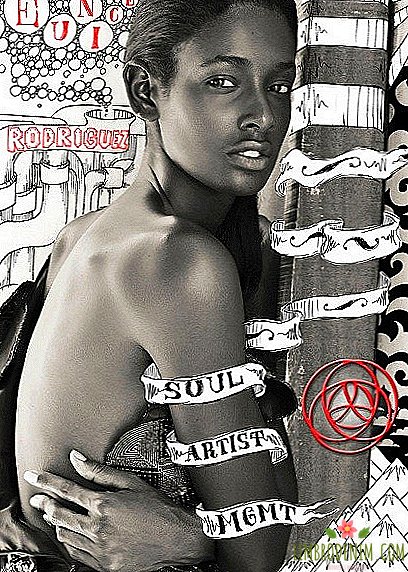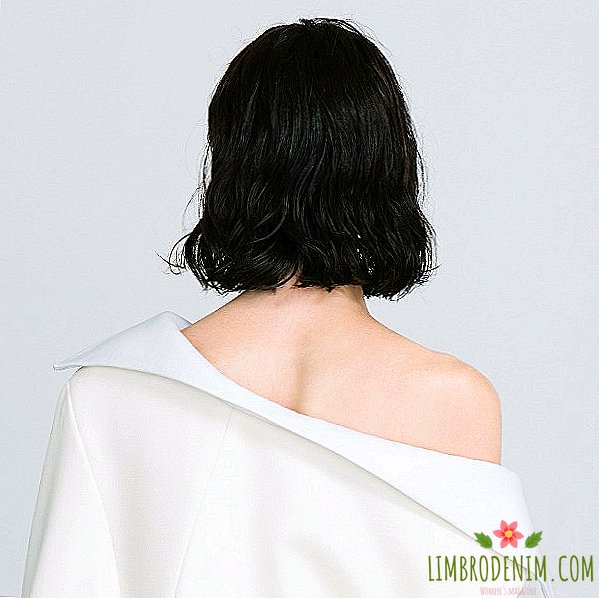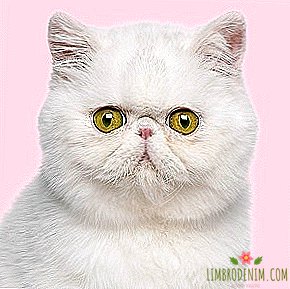Compact Revolution: Cosmetics Packaging Changing the World
Text: Nastya Borovik
Innovations in decorative and caring cosmetics associated with the discovery of new ingredients and the improvement of textures more often than with the creation of a fundamentally new packaging. As history shows, the shape of a product changes less often than its formulas, but if this happens, a new bottle or applicator often transforms the entire category of products. Changes are really important because the packaging design solves the problems associated not only with a pleasant appearance, but also with storage, as well as hygiene and ease of application. Here are ten vivid examples of packaging revolution - from the beginning of the century to today.
Compact powder

At the end of the 19th century, powders made of precious metals were available only to wealthy ladies and were made to order from jewelers. The boxes were most often decorated with precious stones or the initials of the owner. Women who were less fortunate in their origin or marriage were treated with improvised means - they made powder compacts from cigarette cases, pill boxes and snuffboxes. In the 20th century, the popularity of powder grew due to its active use in theater and cinema. The actresses powdered their faces to a state of perfect smoothness, and by their very appearance they made the fans want to buy magic powder. So, the powder, along with the usual perfumes and gloves, was a part of the collection of Sarah Bernard.
The first compact powder with a sponge, similar to those that we use now, was released in 1923 in England, and it cost, according to the memoirs of contemporaries, expensive. Gradually, with the development of plastic production, the powder box turned from a luxury item into a convenient disposable plastic container with compressed powder. The most famous powder, released for everyone and everyone, is the famous Max-Factor Pan-Cake, originally created for technicolor filming and therefore has a fundamentally new texture and properties. In contrast to the traditional theatrical makeup, it did not reflect the light, lay down evenly and was little exposed to external influences, which means it was perfect for everyday use.
By the 1940s, compact powder had completely changed and appeared on store shelves in all its variety of shapes and colors. The initials of the owners on the lids of the powder boxes were replaced by the logos of the manufacturers. At the same time, on the pages of women's magazines one could increasingly see advertisements of powder Revlon, Helena Rubinstein, Max Factor and other cosmetic brands. Companies continued to use popular Hollywood actresses in advertising to sell women not only cosmetics, but also the dream to look like a celebrity.
Lipstick in a twisting tube

Modern lipstick is available in a variety of formats and textures, but the classic remains a solid pencil in the unscrewing tube. Lipstick, it seems, always existed, but before World War I this tool was not intended to be worn with itself: it was wrapped in silk and paper or placed in rather heavy jars, that is, the chances to make up your lips and not mess your hands were about zero . A new user-friendly design for the lipstick was patented by James Bruce Mason in 1923: he conceived this design specifically for products that are reduced in use. The practical invention was appreciated, and in the next two decades dozens of different types of unscrewing lipsticks were patented in the USA.
The form has its own history and stick. Omnipresent Max Factor painted the lips of movie stars, emphasizing Cupid's bow, and in 1926 Helena Rubinstein presented the world's first lipstick with a heart-shaped beveled top that could easily contour lips according to all the rules of fashion.
In the next decade, the tube became so comfortable that it could be opened, twisted and closed with one hand. Many manufacturers have such automatic lipsticks: Automatic Lipstick and Golden Automatic from Helena Rubinstein, Ayer's Automatic Lipstick from Harriet Hubbard, Rouge Automatique from Guerlain. And in 2011, Guerlain released a whole collection of lipsticks from the past under the same name - it turned out very beautiful.
Spiral brush mascara

The mascara gained popularity only in the 20s of the last century, and again thanks to the cinema. There were no problems with the formula of the remedy by that time, but the discomfort in use was very noticeable. Women had to paint their eyelashes with a miniature brush, which left splashes on their eyebrows and eyelids. Remember the compact briquettes "Leningradskaya" of my mother's cosmetics and imagine the scale of everyday nightmare.
A new word said Helena Rubinstein. In 1957, the company created Mascara-Matic mascara, the first liquid mascara in a pencil case with a spiral-like applicator brush. Ink, like lipstick, promoted under the idea of "automatic." Revlon, Max Factor, Maybelline and many other cosmetic companies picked up the idea and released their versions of high-tech mascara. A couple of days ago, we had the opportunity to experience a new version of vintage brushes - this year they were repeated in the design of a two-phase ink Hourglass The Curator Lash Instrument.
Liquid eyeliner

Various options for eyeliners - another ancient form of eye makeup. In the 20th century, it was repeatedly rethought, starting with the thick Smokey Aes to sharp cat shooters. Liquid eyeliner in the form of a felt-tip pen or a bubble with a thin brush appeared in the 1960s and for many years formed trends in makeup.
Thanks to the convenient built-in tassel, it was possible to draw bold arrows of any shape, which the icons of the time did: Brigitte Bardot, Audrey Hepburn, Edie Sedgwick, Twiggy and others. By the way, not only arrows, but also the last eyelashes inspired artists and cosmetic companies. In 1967, Yardley released a set: Twiggy Lashes eyelashes and Twiggy Eyepaint eyeliner, so that every woman had the opportunity to repeat the image of a supermodel.
Liquid eyeliner dictated its own rules, the emphasis in the makeup was placed on the eyes, summed up in blue, white or black. The fashion for challenging shooters also penetrated the catwalks, where designers such as Mary Quant experimented not only with clothes (first miniskirts, short shorts), but also with make-up models.
Roller Deodorants

The first aluminum chloride based deodorants appeared in the 1900s and were produced in the form of a cream or liquid, and when applied they required time and attention. Ban Roll-On created the roll wrapping created by Helen Barnett Diezerens, inspired by the ballpoint pen technology. The plastic ball quickly and evenly distributed the liquid over the skin and, according to advertising, the roller deodorant was more convenient and also more effectively protected from sweat and odor than its predecessors.
The idea worked, including thanks to the efforts of advertisers who aggressively promoted deodorizing creams and sprays from the beginning of the twentieth century. Historically, people masked an unpleasant smell of sweat with perfumes and colognes, and this suited them. The pioneering copywriters had to literally swell the problem of catastrophic proportions out of perspiration. Thanks to the energetic advertising of deodorants, women learned that everyone around them was discussing “this terrible smell”, and the first rule of seduction is a strong deodorant. By the way, men also got it: in the 1930s, advertisements for male deodorants frightened them with the possibility of being fired because of an unpleasant smell, and during the Great Depression, such a statement had weight.
Thus, by the end of the 1960s, ball deodorants were sold all over the world not only thanks to an innovative applicator. However, Ban Roll-On in the early 1970s showed both women and men in the classic TV commercials, and the company has not yet shared its deodorants by gender. At the same time, advertising in magazines was still targeted to women - their main audience.
Brushes

Until the middle of the 19th century, mainly maidservants of rich ladies used makeup brushes to apply cosmetics to their hostesses. And although many of the wealthy women were able and loved to be painted, they still preferred not to do it on their own. The situation was corrected by the invention of the technology of mass production of mirrors in 1835 in Germany. Mirrors began to appear in every home, women had the opportunity to paint themselves without help, and by the way Germany became one of the main centers for the production of brushes.
Later, Japanese manufacturers entered the market, who invested their centuries-old experience in the production of brushes in the creation of makeup tools. They were used in calligraphy and for make-up in the kabuki theater, hence the name of one of the most popular and convenient cosmetic brushes.
The design of Japanese brushes is a separate story. For example, the brush of the Japanese company Kashoen 1883 are like works of art and are worth it to collect them. For 133 years of its existence, the company, preserving the ancient traditions of the production of brushes, became a partner of Western cosmetic giants such as Chanel, Guerlain, Origins, Max Factor, Revlon, Elizabeth Arden, Estée Lauder. The most interesting thing is the powder brush, the handle of which is varnished using the same technology as the bowl used for the coronation of current Japanese Emperor Akihito.
Matting napkins

The history of matting facial tissue, or aburator, began in 1610 in Japan. Originally intended for the packaging of the finest decorative gold, this paper became popular among the actors of the Kabuki theater in the 17th century. Thanks to aburator, actors could easily remove excess sebum and sweat from their faces without the risk of damaging a thick layer of makeup. Soon this find was adopted by a geisha. With the help of matting paper, they prepared the skin for applying traditional make-up, and also used it to return the face to haze in the intervals between hours of guests.
For modern women, the preservation of makeup is just as important as for geishas, so the functions of matting napkins have not changed significantly since their appearance. They are still called upon to remove unwanted brilliance, leaving the tone in place. Napkins of our time differ from traditional paper in aburator packaging and the variety of impregnation formulations, but there are brands that adhere to authenticity in production.
To the note: judging by the huge number of reviews on makeupalley.com (131 reviews and rating 4.8 out of 5), ordinary Starbucks napkins turned out to be one of the most popular matting napkins.
Beautyblender

The world's first reusable drop shaped sponge entered the market in 2007 and forever simplified the life of makeup artists, proving that years of practice and airbrush are not needed to create a perfect tone. All the "magic" is reduced to simple actions: wet, wring, apply and get the perfect face.
Its creator - a makeup artist with 25 years of experience Rea Ann Silva - says that she didn’t even think that a multi-million empire would grow out of her idea. She was simply annoyed by the traditional triangular shaped disposable sponges. But Beautyblender has become a real salvation for cinema, in which the final standards were won by high HD standards. Makeup for shooting should have been both invisible and flawless, while remaining in its original form as long as possible. It is as if Beautyblender was specially created to cope with this task.
In just a few years, the brand name has become a household name, and now in every second make-up video tutorial you can see beauty-blenders of different colors and sizes: drop-shaped sponge replaced all brushes and is good for a variety of makeup tools and techniques.
Cloth Masks

Serum-soaked masks were created in South Korea and quickly gained worldwide recognition. To make a face on the cover of Vogue, 10-20 minutes is enough. The dream that there will be a bag with a solution to any problem came true.
Manufacturers of masks are surprised not only by the formulas, which include snake venom, pearls, and already many clear snail extracts, but also by forms: lace, hydrogel, in the form of animals, glowing in the dark. There are masks for lips, tips of hair, nails, elbows and feet - you can turn around from head to toe. This is what Lady Gaga, Lena Dunham, James Franco, Chris Pratt, Mindy Kaling and many other celebrities demonstrate in their instagrams. The next step is a juicer, which in a few seconds will turn any vegetable or fruit into a hydrogel face mask.
Couchones

For the first time the tonal IOPE Air Cushion was introduced in 2008 by the South Korean cosmetics giant AmorePacific. Initially, it was conceived as a universal remedy (tone, care and protection from the sun) inside the porous pad, from which the cream was squeezed out when pressed. The pad was placed in a classic powder box with a mirror and a sponge, which is convenient to carry around and correct makeup during the day. This radically distinguished couchons from the usual tubes and cans with tonal means. IOPE attracted attention not only by the revolutionary packaging, but also by advertising their couchons. They set an unprecedented experiment in which the model, in complete weightlessness, managed to put an ideal tone for itself in 30 seconds with the help of Air Cushion.
Predictable foodstuffs quickly captured the world, and soon many Asian and Western brands adapted this technology, releasing not only tonal couchons, but also concealers, blush, lip gloss, lipstick, eye shadow, eyeliner, and even loose powder - all with pads.
The current creative director of Lancôme, Lisa Aldridge, is notable for his special love for couchons. Thanks to her, one of the main cosmetic innovations of this summer - Juicy Shaker lip gloss. A masterpiece of cosmetic packaging looks like a miniature cocktail shaker filled with bright two-phase glitter, and the cushion brush adds a lot of pleasure to the process of applying the product.
Photo: olya6105 - stock.adobe.com, Alvarra Crazy - stock.adobe.com, boomerang11 - stock.adobe.com, AlenKadr - stock.adobe.com, Nikita Zabellevich - stock.adobe.com, saknakorn - stock.adobe.com, Dayla, The Face Shop, Lancôme, Pudra, Muji




